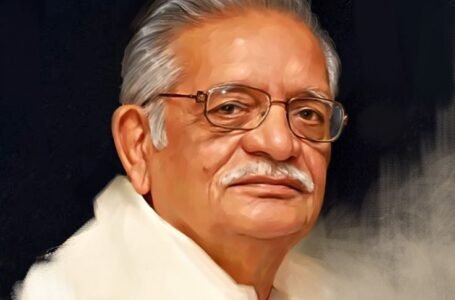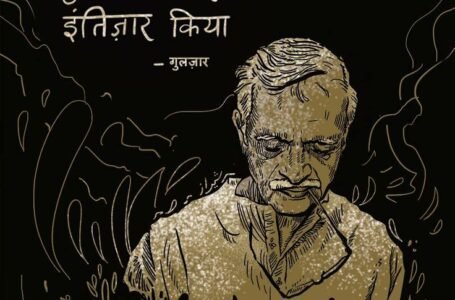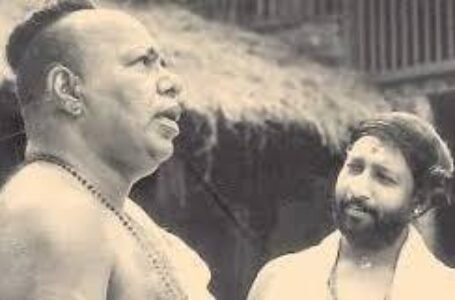Pancha Kosha Siddhant: The Five Layers of Human Consciousness in Vedic Philosophy
- Ancient history Asian history
 Trushti Dand
Trushti Dand- February 24, 2025
- 0
- 12

Originating from the Sanskrit words pancha, which means “five,” and kosha, which means “sheath,” pancha kosha alludes to the idea in yoga philosophy that every experience is mediated through five layers of awareness. The true self, or atman, sits at the core of these five layers. It is thought that identification with each of the five koshas gives rise to a person’s distinct view of reality, and yoga helps heighten awareness and comprehension of these sheaths. Pancha Kosha also offers a blueprint for resolving bodily, psychological, and energetic imbalances because these layers cover every facet of existence, from the coarse to the transcendental. When the five sheaths are balanced and integrated, the veil of maya (illusion) is lifted, and any sense of separation between atman and brahman (universal awareness) is dispelled, and wellbeing is said to emerge.
The Taittiriya Upanishad, a Sanskrit work from the Vedic era that is incorporated into the Yajurveda, is where the idea of pancha kosha first appeared. The nature of the self and one’s relationship to the cosmos were topics covered in the classical Upanishads, and pancha kosha is regarded as one of the first conceptualisations of the human person.
The Taittiriya Upanishad’s account of pancha kosha is purely symbolic; later Vedantic writings like Sankara’s Vivekacudamani and Sadananda’s Vedantasara provide a more thorough explanation as taught in the yoga tradition.
The ideas of brahman and atman, which are fundamental to Vedantic philosophy, significantly impacted the creation of the kosha model. It is thought that a real comprehension of the nature of the self as one with global consciousness can be revealed by gradually travelling inward via the five sheaths and eliminating imbalances.
The following are the five pancha kosha sheaths:
The food sheath, or Annamaya Kosha, is the outermost kosha and refers to the physical body, which requires sustenance and food in order to flourish. Since physical bodily problems might show up as imbalances in the other layers, it is thought to be the most sensitive kosha. The annamaya kosha is affected by asana practice, dietary adjustments, and sleep quality.- The sheath of vital life force energy, or Pranamaya Kosha, is closely related to Annamaya Kosha and is in charge of bringing life to the physical body. Pranayama, or breathwork, has a significant impact on pranamaya kosha, which is made up of prana (life force energy).
3. The mental or psychological sheath, or Manomaya Kosha, is the part of the mind that controls how one perceives the outside world. Manomaya kosha is the place where a person’s concept of self and the thought patterns that shape their actions grow. The best method for affecting the manomaya kosha is mindfulness.
4. The intellect sheath, or Vijnanamaya Kosha, is the location of intuition and is linked to inner wisdom and higher stages of awareness. It influences all facets of yoga and is also in charge of inner development and sincerity. - The kosha that is closest to atman is Anandamaya Kosha, sometimes referred to as the bliss sheath or bliss body. It offers a sense of unity with global consciousness that goes beyond the rational, thinking intellect. Connecting practitioners with Anandamaya Kosha can be facilitated by daily meditation.
The kosha paradigm is used as a diagnostic tool in yoga therapy since Pancha Kosha includes all facets of being. As a result, a person can be treated holistically as opposed to using a more conventional one-dimensional approach.
Classification of Pancha Koshas
All five of these koshas live in the three bodies that make up the human body. They are the Causal body (Karana sharira) (कारण शरीर), the Gross body (Sthula sharira) (स्थुल शरीर), and the Subtle body or Astral Body (Linga sharira) (लिंग शरीर). The physical body is known as the gross body, or Sthula sharira. The vital energy field, mental, and intellectual state is known as the subtle or astral body or Linga sharira. The ego is the causal body, also known as Karana sharira.
1. The Gross body or Sthula sharira: The gross body is made up of the food sheath and the gross part of the vital air sheath. The Annamaya kosha (physical body) is connected to the Manomaya, Vijnanamaya, and Anandamaya koshas by the Pranamaya kosha, also known as the vital-air sheath. It is connected to the subtle body, or sukshma sharira (सुक्ष्र).
- The subtle body or Linga sharira : It is made up of the mental and intellectual sheaths as well as the vital-air sheath. Through the Pranamaya kosha, which modifies breathing to affect mental and emotional moods, the mental and emotional sheaths transfer energy to the physical body. Passions, wants, emotions, sentiments, and thoughts make up the subtle body.
3. The Casual body or Karana Sharira: Only impressions or vasanas make up the causal body, also known as the Karana Sharira-Bliss sheath.
Developing Happiness via the Pancha Koshas
A comprehensive strategy that supports each Pancha Kosha leads to the development of happiness. Through addressing the mental, intellectual, spiritual, vital, and physical aspects of existence, people can develop a well-rounded and integrated life that is marked by a profound sense of happiness and fulfilment.
1. Holistic Well-Being: Give top priority to pursuits that support holistic well-being, such as consistent exercise, a healthy diet, enough sleep, and stress reduction methods. Happiness is fostered from the inside out by cultivating the Annamaya and Pranamaya Koshas, which establish the groundwork for both physical vigour and emotional fortitude.
- Mindful Awareness : To successfully traverse the terrain of ideas, feelings, and sensations, practise mindfulness and self-awareness. People can improve their general pleasure and well-being by cultivating emotional intelligence, resilience, and inner calm through a deeper understanding of the Manomaya Kosha.
3. Intellectual Stimulation: Take part in pursuits like reading, learning, and artistic expression that foster intellectual curiosity and inventiveness. Long-term happiness and fulfilment are facilitated by cultivating the Vijnanamaya Kosha, which promotes intellectual development, self-discovery, and a greater sense of meaning and purpose in life.
4. Spiritual Exploration: Examine techniques like meditation, prayer, and contemplative inquiry that promote spiritual development and self-realization. People can transcend the boundaries of the ego and experience deep states of joy, peace, and spiritual fulfilment by exploring the depths of the Anandamaya Kosha and connecting with the source of eternal bliss inside.
In summary, the Pancha Koshas provide a thorough framework for comprehending the complex nature of human existence and the quest for happiness. People can start a life-changing path to inner contentment and long-lasting fulfilment by taking care of their bodily, vital, mental, intellectual, and spiritual sheaths. By practicing mindfulness, holistic health, intellectual stimulation, and spiritual discovery, one can discover their inner happiness and bring joy and positivity into all facets of their lives. May we explore the Pancha Koshas’ depths and uncover the limitless stores of joy that lie inside, shedding light on the way to a life that is deeply meaningful, fulfilling, and purposeful.
Pancha Kosha Theory of personality
Many theories of personality exist. The majority of widely used and recognised theories of personality were created in the West. However, the Upanishads’ theories of personality are fully validated and offer a natural way to attain contentment and harmony in life while developing a higher level of personality. The physical, mental, and spiritual aspects of a person’s personality are all combined. The Triguna personality theory, as it is known in the East, views personality as a synthesis of the trigunas (tamas, rajas, and satva). Humans have five layers of personality (Pancha Kosha), according to the Taittiriya Upanishad. These layers include the material or gross body (Anamaya Kosha), the vital or instinctual component (Pranamaya Kosha), the cerebral or psychological element (Manomaya Kosha), the cerebral element (Vigyanmaya Kosha), and the fifth element of unadulterated joy and contentment (Anandmaya Kosha). Both Western and Eastern experts have studied the Triguna theory of personality. However, actual study and the creation of tools for Pancha Kosha personality theory are lacking. The Eastern concept of Pancha Kosha should be given due weight by both East and West scholars since the theories are supposed to be culturally specific.
Pancha Kosha Theory of Education
The Pancha Kosha symbolises the five stages of a child’s development: Anandamaya Kosha, which facilitates a connection with the transcendent; Annamaya Kosha, which is associated with physical maturation; Pranamaya Kosha, which fosters bodily awareness; Manomaya Kosha, which fosters emotional and spiritual growth; and Vijnanamaya Kosha, which stimulates intellectual advancement.
Conclusion
In conclusion, Panchkosh Siddhant uses five shreaths- Annamaya, Pranamaya, Manomaya, Vijnanamaya and Anandamaya Kosha- to provide a comprehensive feedback for comprehending human existence. The transition from the physical to the spiritual self is exemplified by its division into gross, subtle and casual bodies. While the theory of personality encourages balanced growth across all koshas, the idea of happiness places more emphasis on inner bliss. Its educational philosophy promotes the development of the body, mind and spirit in a holistic manner. This age-old knowledge is still applicable today ,pointing people in the direction of happiness , self-awareness and a fulfilling existence.


